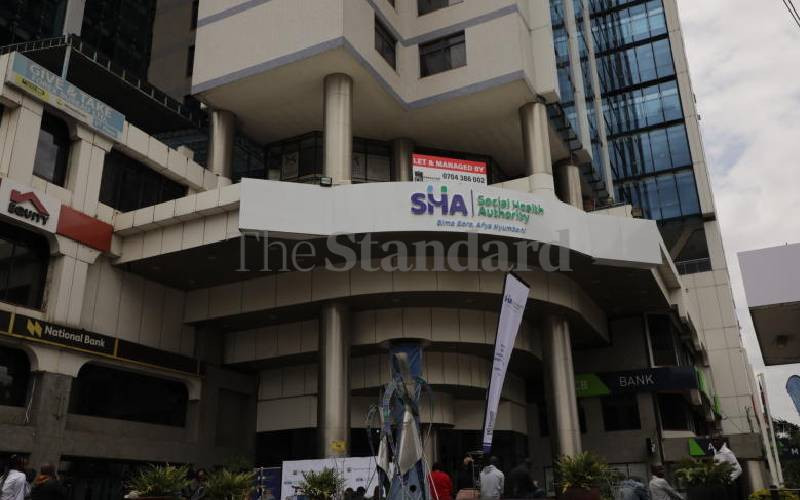On April 8, 2020, new regulations came into force for Credit Reference Bureaus (CRBs) and Kenya’s Credit Information Sharing (CIS) system, refreshing the framework that has been in place since 2013.
The regulations provide for the licensing and supervision of CRBs by Central Bank of Kenya (CBK), and importantly, a framework for the exchange of borrowers’ credit information between lenders and CRBs.
The Credit Information Sharing mechanism aims to bridge the information gap about borrowers’ creditworthiness — by taking into account the borrower’s credit history and allowing credit to be priced accordingly.
A good credit record resulting from a good repayment history demonstrates the borrower’s higher creditworthiness and should lead to a lower cost of credit.
It is therefore an important tool in ensuring that the banking sector works for and with Kenyans, as was outlined in the Banking Sector Charter that was launched in February 2019 by CBK.
The CIS system has not worked as expected, requiring a refresh. For instance, it was seen as a punitive “blacklisting” tool that bars Kenyans from getting loans, instead of helping borrowers take advantage of their credit history to get better pricing of loans.
There are 378 million records in CRBs, of which 42 million are blacklisted. Of these, 13 million are being blacklisted for amounts less than Sh1,000.
Customers have also complained about slowness in updating CRB records after arrears have been cleared; delays in correcting errors by lenders who mistakenly “blacklisted” compliant borrowers; and the cost of clearance reports for youth entering the employment market.
Unregulated digital (mobile-based) and credit-only lenders were seen as particularly outrageous in using CRB listing and other measures to harass delinquent borrowers.
The improvements in the CIS are to be seen against a backdrop of two important pillars to strengthen the behaviour of banks. Banks are now required to adopt a risk-based pricing approach that takes into account borrowers’ credit reports in the pricing of loans.
CRBs are required to generate borrowers’ credit score that lenders can use to assess their creditworthiness.
Digital lenders
Banks are also required to be customer-centric, including by promptly resolving customer complaints including those relating to CRBs. These pillars will go a long way in addressing some of the underlying concerns.
However, unregulated digital lenders and credit-only institutions have been removed from the CIS mechanism as they lack effective customer complaints and redress mechanisms.
The refresh of the regulations improves the CIS framework for the benefit of borrowers and lenders alike. The key elements include:
Stay informed. Subscribe to our newsletter
First, the new regulations set a minimum threshold of Sh1,000 for negative credit information that is submitted to CRBs by lenders. Thus, borrowers' information regarding non-performing loans below that threshold will not be submitted to CRBs.
Further, more than five million unique borrowers comprising more than one-third of the borrowers in CRBs that were “blacklisted” for amounts less than Sh1,000 will be “delisted.”
Second, first-time CRB clearance certificates will now be provided by CRBs at no charge. This will be particularly beneficial to our youth and graduates who are seeking formal employment for the first time, as the cost of these certificates had become a barrier.
Third, saccos regulated by the Saccos Regulatory Authority (SASRA) will now provide and access information from CRBs, similar to commercial and microfinance banks.
Saccos are major players in Kenya’s financial sector and a significant number of Micro, Medium and Small Enterprises (MSMEs) borrow from saccos.
It is therefore important that the credit history with saccos be included in assessing a borrower’s creditworthiness.
Four, the regulations strengthen the supervision of CRBs in accordance with global best practices. In particular, they enhance the governance of CRBs by requiring a diversified board composition, and empower CBK to set minimum capital requirements to ensure CRBs are financially sound.
An important development was the suspension of the sharing of negative information for a period of six months from April 1 to September 30, 2020, to lessen the economic impact of the Covid-19 pandemic.
Loans that were performing but have become non-performing during that period would not lead to a “blacklisting” of the borrowers.
These changes and actions present a secure path for the CIS framework to work for and with Kenyans. On their part, borrowers should repay their loans as scheduled to develop a good credit history.
This would underpin the financial sector’s journey to deliver affordable credit, driving shared prosperity and growth for Kenyans.
Dr Njoroge is the Governor of the Central Bank of Kenya
 The Standard Group Plc is a
multi-media organization with investments in media platforms spanning newspaper
print operations, television, radio broadcasting, digital and online services. The
Standard Group is recognized as a leading multi-media house in Kenya with a key
influence in matters of national and international interest.
The Standard Group Plc is a
multi-media organization with investments in media platforms spanning newspaper
print operations, television, radio broadcasting, digital and online services. The
Standard Group is recognized as a leading multi-media house in Kenya with a key
influence in matters of national and international interest.
 The Standard Group Plc is a
multi-media organization with investments in media platforms spanning newspaper
print operations, television, radio broadcasting, digital and online services. The
Standard Group is recognized as a leading multi-media house in Kenya with a key
influence in matters of national and international interest.
The Standard Group Plc is a
multi-media organization with investments in media platforms spanning newspaper
print operations, television, radio broadcasting, digital and online services. The
Standard Group is recognized as a leading multi-media house in Kenya with a key
influence in matters of national and international interest.








